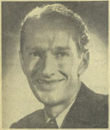Running for twelve years and a total of 510 episodes, Homicide was a seminal Australian police-procedural program, set in the homicide squad of the Victoria Police. According to Don Storey in his Classic Australian Television, it represented a turning point for Australian television, prompting the development of local productions over the purchase of relatively inexpensive American dramas. Indeed, Storey quotes Hector Crawford as saying that his production company intended three outcomes from Homicide: demonstrating that it was possible to make a high-quality local drama series, counteracting criticism of local performers, and showing that Australian audiences would watch Australian-made dramas.
As Moran notes in his Guide to Australian TV Series, the program adopted a narrative structure focusing on crime, detection, and capture, rather than on character studies of the lead detectives. The early episodes were produced by a small crew (Storey notes that the crew was frequently limited to four people: cameraman, grip, director, and assistant director), requiring some degree of ingenuity to achieve a polished result (including, in some cases, the actors performing their own stunts). However, the program received extensive support from the Victoria Police (who recognised, in its positive portrayal of police officers, a valuable public-relations exercise) and, as its popularity grew, from the public.
The program's cast changed extensively over its twelve years on the air, though it remained focused on a small group of male detectives, with the inclusion of irregular characters such as Policewoman Helen Hopgood (played by Derani Scarr), written on an as-required basis to reflect the involvement of women in the police force. In Moran's words, 'The other star of Homicide was the location film work. These ordinary, everyday familiar urban locations were what gave the series a gritty realism and familiarised audiences with the shock of recognition at seeing themselves and their milieus on air'.


